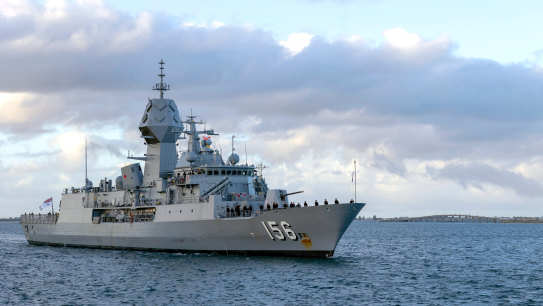Strategic Maritime Dynamics Unveiled in the Red Sea Naval Theater
The Red Sea Naval Theater has emerged as a focal point for strategic maritime dynamics, playing a pivotal role in the geopolitical landscape. Stretching between Africa and the Arabian Peninsula, the Red Sea is a key waterway connecting the Mediterranean Sea to the Indian Ocean, making it a crucial route for global trade and military movements.
Geopolitical Significance
The geopolitical significance of the Red Sea Naval Theater cannot be overstated. As nations vie for influence in the region, the control and security of this vital maritime corridor become paramount. Countries with coastlines along the Red Sea, such as Egypt, Saudi Arabia, and Sudan, find themselves in strategic positions to shape the geopolitical dynamics in the area.
Trade and Economic Importance
The Red Sea serves as a major artery for international trade, facilitating the transportation of goods between Europe, Asia, and Africa. The Suez Canal, a key passage within the Red Sea Naval Theater, is a linchpin for global commerce, enabling vessels to bypass the lengthy journey around the southern tip of Africa. The economic implications of maintaining open and secure maritime routes through the Red Sea are immense, influencing the policies and interests of nations worldwide.
Security Challenges
Despite its economic significance, the Red Sea Naval Theater is not immune to security challenges. Piracy, political instability, and regional conflicts have at times disrupted the smooth flow of maritime activities. Nations bordering the Red Sea have collaborated to address these security concerns, with joint naval exercises and cooperative efforts aimed at maintaining stability in the region.
Military Presence and Alliances
Several nations have established a military presence in the Red Sea Naval Theater, deploying naval assets to safeguard their interests. The involvement of global powers, such as the United States, China, and Russia, adds another layer of complexity to the strategic landscape. Military alliances and partnerships formed in the region contribute to the delicate balance of power, shaping the geopolitical future of the Red Sea.
Strategic Alliances and Rivalries
Within the Red Sea Naval Theater, nations form strategic alliances to enhance their geopolitical standing. These alliances are often shaped by shared economic interests, security concerns, or geopolitical objectives. Simultaneously, rivalries among nations competing for influence in the region add a layer of complexity, creating a dynamic environment where alliances can shift and evolve based on changing circumstances.
Environmental Challenges
Beyond geopolitical and security considerations, the Red Sea Naval Theater faces environmental challenges. Rising sea levels, pollution, and the impact of climate change pose threats to the delicate ecosystem of the region. Addressing these environmental issues requires international cooperation and sustainable policies to ensure the long-term health of the Red Sea and its surrounding areas.
The Role of Technology
In addressing the multifaceted challenges of the Red Sea Naval Theater, technology plays a crucial role. Advanced maritime surveillance, communication systems, and naval technologies contribute to enhancing the security and efficiency of maritime operations. As nations invest in technological advancements, the Red Sea becomes a testing ground for cutting-edge solutions to navigate the complexities of modern naval dynamics.
Looking Ahead
The future of the Red Sea Naval Theater remains dynamic and unpredictable. Evolving geopolitical landscapes, economic shifts, and environmental changes will continue to shape the strategic importance of this vital maritime corridor. International collaboration, technological innovation, and diplomatic initiatives will be essential in ensuring the stability and prosperity of the Red Sea region for generations to come.

